Dr. Kentaro Taki, Associate Professor, School of Environmental Sciences,
the University of Shiga Prefecture
What outcomes did DioVISTA/Flood bring to Dr. Taki's research, which aims to create a safe and secure society by uniformly analyzing the inundation risk throughout the entire river basin?
“Previously, we spent a huge amount of time, money, and effort simulating inundation throughout Shiga Prefecture, but with DioVISTA/Flood, which has a fast calculation process, it can be done it in a short time and uniformly. Recently, I have been receiving consultation requests about diverse aspects of River Basin Disaster Resilience and Sustainability by All, and I can check in advance with DioVISTA/Flood before suggesting what they can do.
This usability and speed of calculation are excellent not only for inundation analysis and risk assessment but also for a tool for active trial-and-error of various measures for River Basin Disaster Resilience and Sustainability by All,” said Dr. Taki.
He continued, “The more engineers analyze using DioVISTA/Flood, the more they will be able to understand the ‘breathing of water.’
The high calculation speed and high operability make it easy to do trial-and-error. When young engineers research a site with the data they analyzed themselves, they immediately gain a deeper understanding of the phenomena of inundation, and grow greatly as an engineer.
I think DioVISTA/Flood is a tool that can make a huge contribution to training hydraulic engineers who have acquired an understanding of the ‘breathing of water.’”
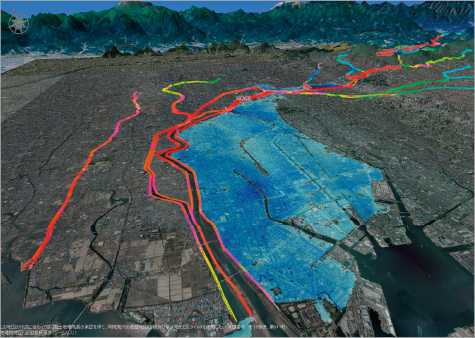
Illustration of the inundation risk throughout the river basin
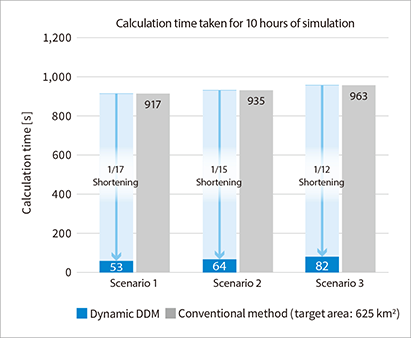
Calculation time per scenario
Dr. Yamaguchi of the Research & Development group explained the purpose of developing DioVISTA/Flood, which is used at the forefront of river basin research.
“We have improved the calculation speed by using the ‘Dynamic DDM*1’ method. Along with having a patent obtained in Japan, the United States of America and the People's Republic of China, this method is recognized as having high calculation speed and high operability, and we received the Kanto-region “Encouragement Prize for Invention” Commendation for Invention from the Japan Institute of Invention and Innovation in FY2019. We focused on developing high-accuracy software that helps with River Basin Disaster Resilience and Sustainability by All and can be easily used on our own PCs.
However, PCs are evolving rapidly. Storage media can now be accelerated by switching from HDDs (Hard Disk Drives) to SSDs (Solid State Drives), and CPUs (Central Processing Units) can calculate in parallel with multiple cores. We are pursuing ease-of-use by improving the software day-by-day according to this configuration.”
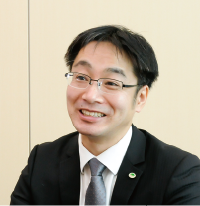
Dr. Taki receives consultations on River Basin Disaster Resilience and Sustainability by All not only from Shiga Prefecture but also from all over Japan. By using DioVISTA/Flood, it is possible to check the inundation characteristics of each region in advance before discussing it, so it is said that consideration for a solution will proceed efficiently.
“It is very important for promoting conventional flood control in Japan to be able to have a dialogue based on the calculation results immediately without spending too much time to produce the calculation results in order to perform trial-and-error with various measures,” Dr. Taki said. We asked Dr. Taki more about the direction of conventional flood control in Japan in the future.
“Previously, we had considered the inside and outside of the river separately, but in the future, it will be standard practice to take measures for the entire river basin, assuming that the river will overflow. In July 2020, Japan's Ministry of Land, Infrastructure, Transport and Tourism announced that the country will shift from conventional flood control to River Basin Disaster Resilience and Sustainability by All, which will be comprehensively considered as a whole for river and city development. For example, river and city offices had different management categories, so that they were divided both spatially and technically, but they are able to be combined using DioVISTA/Flood. In order to ‘protect human lives and livelihoods,’ which was mentioned earlier as a key phrase, we must accurately ascertain how inundation occurs, which will lead to consideration of effective measures. What time will our house be inundated, how severe will it be, and with how much momentum will the flood come? We can use this software to recognize what risks we have in our place of residence, schools, companies, or hospitals. Since this is related to city planning and housing development, it is expected that creation of more secure and fulfilling communities will take place in each region of Japan according to the characteristics of that region.
It is very important for the coming era when climate change and population decline will lead to land restructuring,” Dr. Taki said.
Dr. Yamaguchi, the developer of DioVISTA/Flood, said that he has the same ideas as Dr. Taki, who regards river and city development as one thing.
“The first objective of developing this software 15 years ago was disaster prevention against inundation. It was in the area of city development, and it was incompatible with hydrological engineering. However, the times have changed, and we focused on the fact that river and city development are inseparable due to the repeated inundation caused by the intensifying of climate change. We have built DioVISTA/Flood on the comprehensiveness concept. We believe it's a configuration that is not in any other software.” The efforts concerning inundation are never sole within the laboratory. Through simulations with DioVISTA/Flood, Dr. Taki demonstrates that the issue affects each and every one of us.
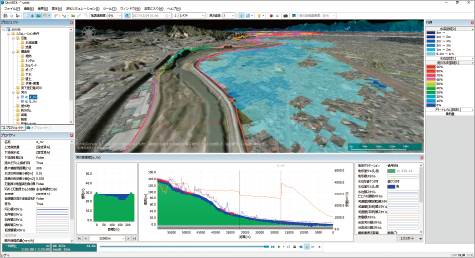
DioVISTA/Flood display screen
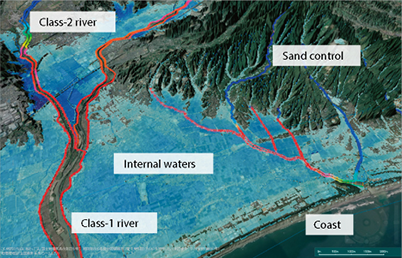
Illustration of investigating inundation risks for the entire river basin
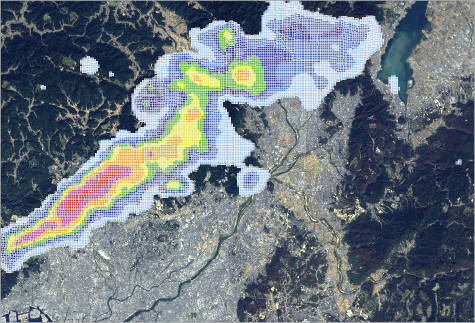
Display of rainfall distribution
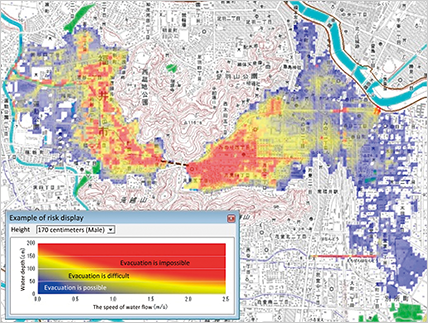
Creation of a risk distribution map useful for evacuation behavior
DioVISTA/Flood simulates inundation risks, making it useful for creating measures to minimize flood disasters. Not only for disaster prevention, it is expected to be used in a wide range of fields such as social infrastructure systems, construction, and property insurance, and Dr. Taki focuses on utilization in the research and education fields as an educator.
“Seeing the catastrophic flood disasters that occur nearly every year, a large number of students who want to contribute in the field of River Basin Disaster Resilience and Sustainability by All in the future are drawn to my laboratory as well. When I introduce my laboratory, I show everyone results we calculated with DioVISTA/Flood and say to them, ‘These are the kinds of things we're able to do now. Let's take this data to the region and think with the local residents about the best way to evacuate.’ This makes everyone's eyes light up.
Being able to create something that is truly useful to people with their own hands inspires students' feelings toward social contribution. If the purpose of learning is clarified first—not only in environmental sciences—it will change their desire to systematically absorb knowledge. I would like to emphasize that before students study equations of motion and continuity, it's important to show them the purpose of the mathematical formulas they are learning,” Dr. Taki said. In addition, he said, “I think it would be interesting if junior and senior high school students were able to get some experience with DioVISTA/Flood.” He even made a request: “Please create an educational version.”
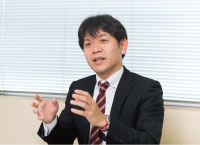
Hitachi Power Solutions, in conjunction with Hitachi, has announced development of “new technology to automatically draw up reservoir discharge plans” that contributes to minimizing flood disasters caused by inundation. Dr. Yamaguchi of the Research & Development Group explained the details.
“This is a solution that simulates discharge of various types of reservoirs through DioVISTA/Flood and derives the optimal solution from among several patterns. For practical use, there are many challenges such as how to incorporate it into the legal framework and conventional methods. We would like to have many academic researchers including Dr. Taki use it, and we'll update it based on their opinions. In FY2021, Hitachi Power Solutions plans to release it.”


It is a solution that can be considered one of the further uses of DioVISTA/Flood. Dr. Taki suggests that it is necessary to help more software such as DioVISTA/Flood become widespread in order to promote a new framework for the new era.
“It is important to provide information about what happened as soon as possible in the event of a flood disaster,” said Dr. Taki. “The guidelines for reconstruction depend on providing this information as soon as possible, such as where the weak point was, the timing at which inundation occurred, whether it should be considered to conduct evacuation only, and whether it is necessary for the people to change their lifestyles. For example, if DioVISTA/Flood is installed by all prefectural offices in Japan and there is someone in each of them who can operate it, it will be possible to take measures to gain the initiative in rebuilding the river and the city,” he adds, looking ahead to the upcoming era in which disasters will be more frequent.
In response to these ideas, Hitachi Power Solutions will provide solutions that contribute to the improvement of regional resilience and support the realization of a better society.
The University of Shiga Prefecture
Department of Environmental Policy and Planning, School of Environmental Sciences